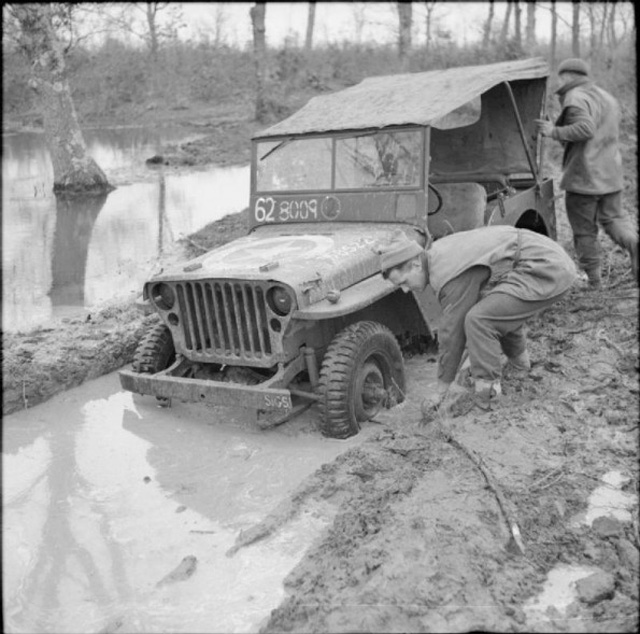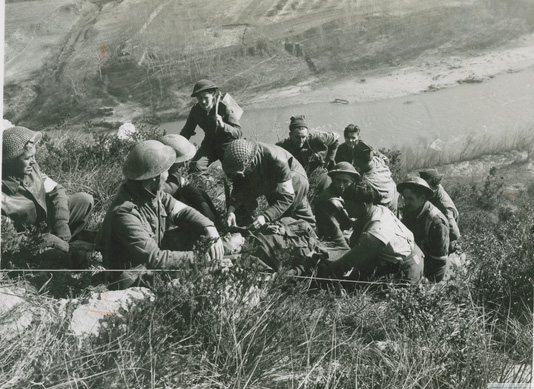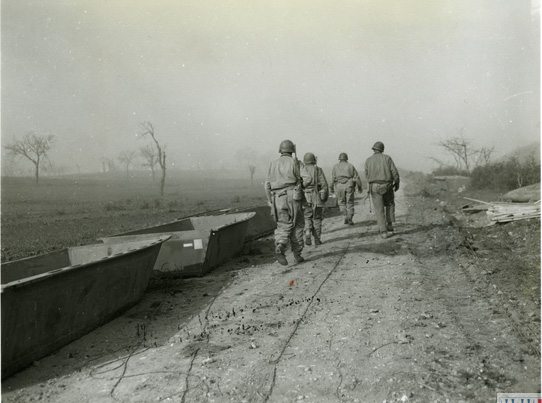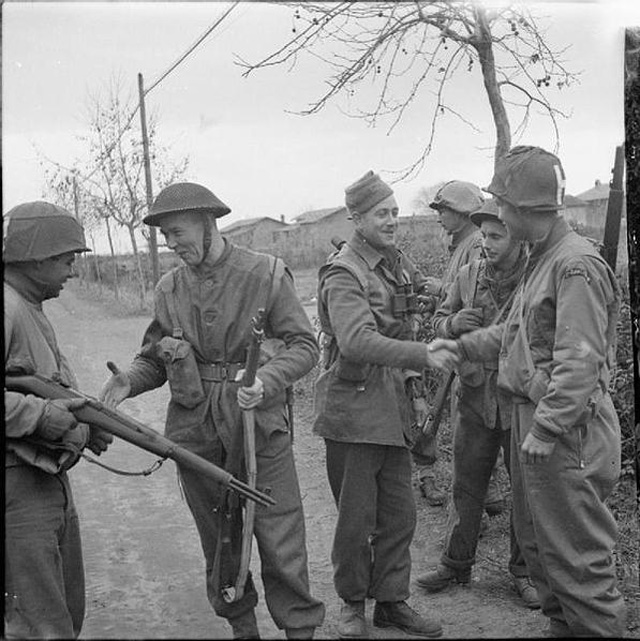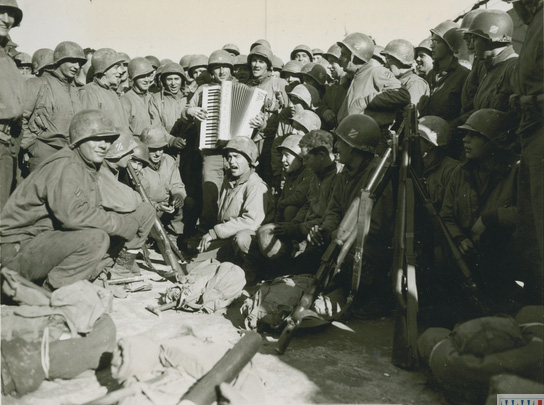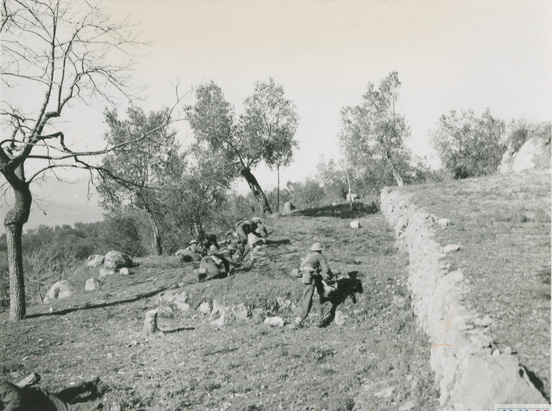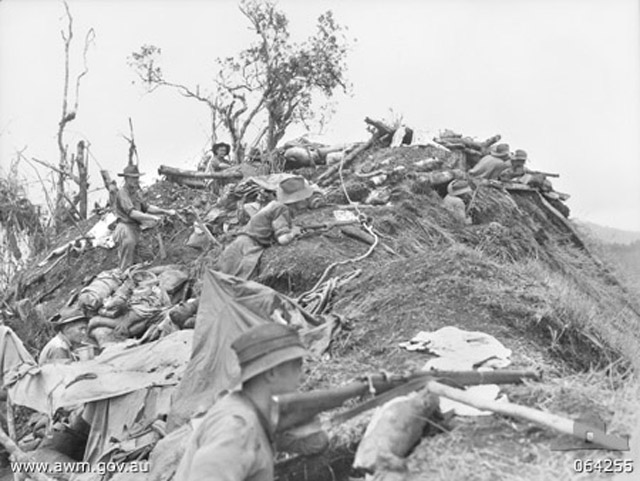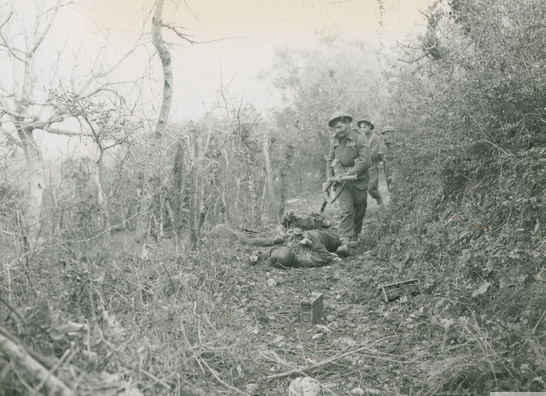Air Operations, Bismarcks
- V Bomber Command A-20s attack Japanese Army ground troops and antiaircraft batteries near Gasmata and Cape Raoult.
- More than 60 Marine Corps SBDs, escorted by 80 AirSols fighters, attack the Lakunai airfield at Rabaul and coastal targets. 40 AirSols fighters later sweep the Rabaul area.
- A 347th Fighter Group P-38 downs an A6M Zero near the Lakunai airfield at Rabaul at 0915. VF-40 F6Fs down 2 Zeros over the Rapopo airfield at Rabaul at 0915 hours. VMF-211, VMF-212, and VMF-321 F4Us, and a VMSB-236 SBD crew down 29 A6M Zeros in the Rabaul area between 0912 and 0930 hours. In the unprecedented second mission, VMF-211, VMF-212, and VMF-321 F4Us down 16 more Zeros in the Rabaul area between 1710 and 1730 hours.
- During the night, 7 42nd Medium Bomb Group B-25s attack the Lakunai and Tobera airfields at Rabaul.
Air Operations, CBI
BURMA- 19 7th Heavy Bomb Group B-24s organized into two waves attack shipping at Mergui. 6 490th Medium Bomb Squadron B-25s and 16 459th Fighter Squadron P-38s attack bridges at Myittha and Samon. 1 B-25 and 28 10th Air Force A-36s and P-51s attack dumps at Kamaing and Mogaung. 16 P-40s attack the airfield at Myitkyina, rail bridges at Loilaw, and rail cars at Pidaung.
- 9 341st Medium Bomb Group B-25s and 28 14th Air Force P-40s attack the Kaitak airfield at Hong Kong. 2 B-25s attack three merchant ships near Wenchow.
- A 3d CACW Fighter Group P-40 downs an A6M Zero over Hong Kong at 1450 hours.
Air Operations, East Indies
380th Heavy Bomb Group B-24s attack Flores Island in the Lesser Sunda Islands.
[Air Operations, Europe
RAF BOMBER COMMANDEvening Ops:
- 37 Mosquitos are sent to hit 6 different targets, there are 3 RCM sorties and 9 aircraft lay mines off Cherbourg, Brest and Le Havre.
- There are no losses.
FRANCE:
- Approximately 200 IX Bomber Command B-26s attack V-weapons sites along the Channel coast.
ITALY:
- XII Bomber Command B-25s and B-26s attack targets in and around Avezzano, and B-25s also attack a road junction.
- XII Air Support Command A-20s attack Vallecorsa.
- XII Air Support Command A-36s attack numerous tactical targets.
- XII Air Support Command fighters cover the Anzio beachhead throughout the day.
- Spitfires of the 52nd Fighter Group's 2nd Fighter Squadron down 2 Ju-88s and 3 He-111s near the port of Viareggio about 1650 hours.
- The 414th Night-Fighter Squadron Beaufighter downs 1 Do-217 as it crosses the northern tip of Sardinia while another Beaufighter downs 1 Ju-88 from the same night-raiding formations.
- 57th Fighter Group P-47 fighter-bombers attack a bridge at Skradin.
ITALY:
- 15th Air Force B-24s attack marshalling yards at three locations, the Rieti Airdrome, and several targets of opportunity.
- 15th Air Force B-17s attack marshalling yards at two locations, a rail line, a rail bridge, and two highway bridges.
Air Operations, Marshalls
21 41st Medium Bomb Group B-25s attack the Taroa airfield at Maloelap. 23 VII Bomber Command B-24s attack the Wotje Atoll at dusk. One B-24 attacks the Mille Atoll after dropping out of the main formation because of engine trouble.
[Air Operations, New Guinea
V Fighter Command P-39s attack barges and coastal antiaircraft batteries. 35 V Bomber Command B-24s are intercepted by an estimated 50 Japanese fighters while attacking Wewak. 8th, 49th, and 475th Fighter group P-38s down 19 Japanese fighters in the Wewak area between 1100 and 1130 hours. 5 P-38s are also lost in the action.
[Air Operations, Solomons
20 XIII Fighter Command P-39s attack targets of opportunity in the Shortland Islands.
[Eastern Front
Moscow announces that adverse weather conditions and difficult terrain have held up the Russian forces in the Vitebsk sector.
[Italy
By the end of day the Allies have 50,000 men ashore at Anzio but are only pushing forward very cautiously, inhibited more by the lack of drive from Gen Lucas than by the Germans. He waits for tanks and heavy artillery to arrive instead of launching immediate attacks inland against undefended roads and railway which carry supplies for defenders of the Gustav Line. This caution helps the Germans who are quick to reorganize themselves. Kesselring insists that the Gustav Line and Anzio can both be held despite von Vietinghoff's views to the contrary.
The VI Corps expands the beachhead with little difficulty except on the right flank, where the 3rd Division continues to battle for the Mussoline Canal Bridges. Enemy planes make a strong effort against the beachhead.
Hitler allows reserve forces to be assembled from north Italy, France and the Balkans in the hope of dissuading the British and Americans from future amphibious operations elsewhere in Europe. Within a week eight divisions are in place. 14th Army's headquarters arrives from north Italy to organize and lead them. In view of the scale of this rapid German reaction, criticism of Lucas for failing to push forward to Rome immediately is probably unfounded but a little more vigor could probably have secured better defensive positions before the Germans arrived in strength.
The immediate threat to the Allies, however, comes from the Luftwaffe which attack the new positions. German planes also attack 2 British hospital ships off the Anzio coast, sinking the St David and damaging the Leinster. The attacks are made at dusk with the ships fully lit and identified.
On the Gustav Line, while units of the French Expeditionary Corps under Gen Juin re-take Monte Santa Croce, north of the German defensive line, the American 34th Division prepares to put in an attack towards the Rapido, north of Cassino, so as to encircle the town from the north and reach highway No 6, Via Casilina.
[Mediterranean
The British destroyer Janus is sunk by a German aircraft glider bomb off Anzio. 160 of the crew are lost. 82 survivors are picked up by the British destroyer Jervis, 11 more by other ships in the area. Jervis is hit and badly damaged by a similar bomb, but she is able to proceed to Naples under her own power. She has no casualties.
[New Guinea
Troops of the 18th Bde, Australian 7th Div, in the Ramu valley advance up the slopes of the Finisterre Range toward Shaggy Ridge, capturing Maukiryo. As a result of this victory and of the occupation of Saidor the Allies now control the Huon peninsula completely. The Japanese garrisons, target of frequent air raids, withdraw northwest towards Madang. Allied air superiority is an important factor here and in the rest of the campaign in New Guinea.
[Pacific
- The US submarine Gar (SS-206) attacks a Japanese convoy about 75 miles south of Palau sinking the Japanese transport Taian Maru (3670t).
- The US submarine Snook (SS-279) sinks the Japanese gunboat Magane Maru (3120t) about 175 miles north-northwest of Chichi Jima.
Images from January 23, 1944
|
|
|
|
|
|
|
|
